
Kennedy Park – a 7.5 acre space – was once just a quasi boggy space until it was constituted as Kennedy Park in 1964. Its colloquial name is the “Da Boggy”. Ordnance surveys maps from the nineteenth century and early twentieth century record a boggy green area. There are also memories within the local area of the space being used from the 1930s to the early 1960s as a space for kicking a ball around or playing hurling.
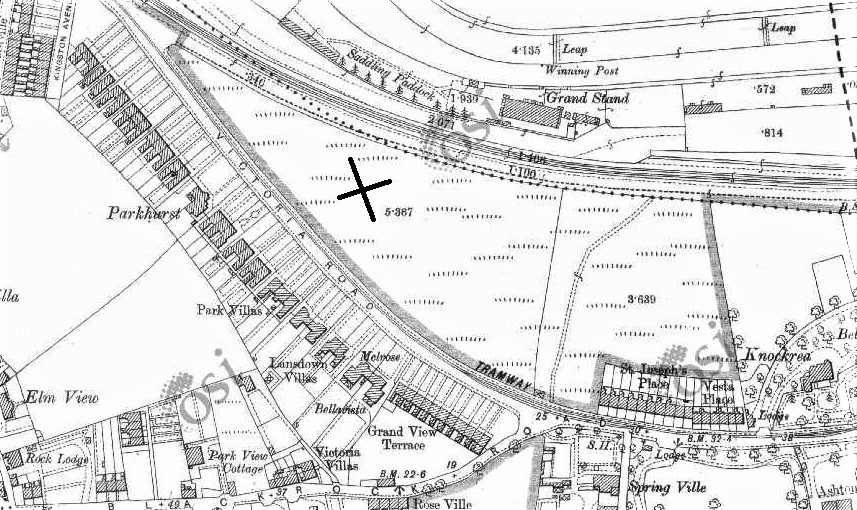
On 28 June 1963, US President John F Kennedy spent the morning in Cork where he received the Freedom of the City (see the YouTube footage of “John F Kennedy in Cork, Ireland, June 28th 1963”).
At Cork City Hall the Cork Lord Mayor, Alderman Seán Casey, TD, opened his address to Kennedy by noting “You stand for the weak against the strong, for right against might”.
Continuing the Lord Mayor noted that Kennedy was receiving the honour “in token of our pride that this descendant of Irish emigrants should have been elected to such an exalted office and of our appreciation of his action in coming to visit the country of his ancestors; as a tribute to his unceasing and fruitful work towards the attainment of prosperity and true peace by all the people of the world, and in recognition of the close ties that have always existed between our two countries”.
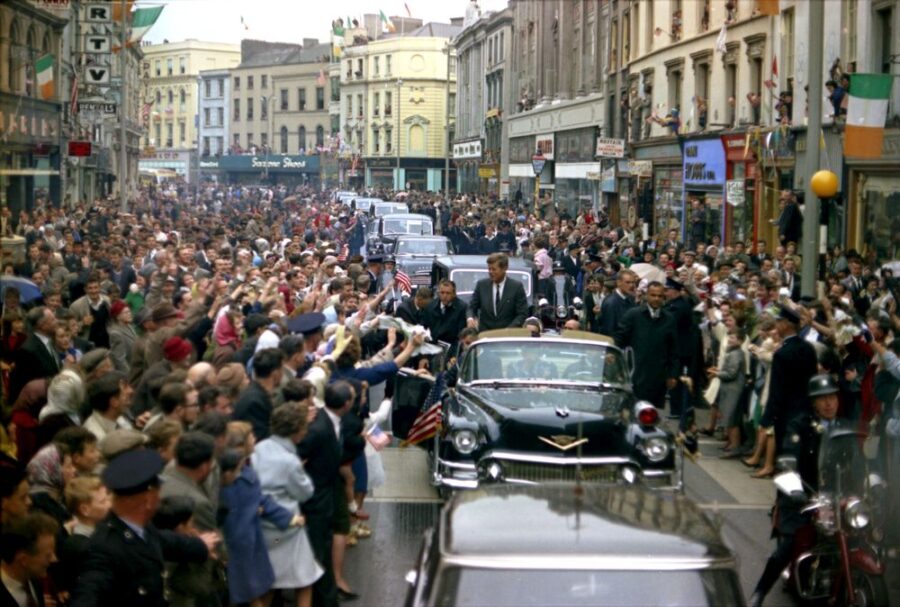
The Freedom of Cork casket was decorated with Celtic designs and on the lid the arms of Cork were engraved. On the front was the American Eagle Crest and on the back of the crest of the Kennedy family.
In a well measured speech, one of Kennedy’s key points referred to Ireland’s hope and mission for freedom through the ages: “So Ireland is still old Ireland but it has found a new mission in the 1960s and that is to lead the free world to join with other countries in the free world to do in the 60’s what Ireland did in the early part of this century and indeed has done for the last 800 years and that it associate itself intimately with the principle of freedom”.
As the crowds swelled outside Cork City Hall to get a glimpse of the President, Kennedy’s motorcade struggled as it made its way to Monahan Road to reach his helicopter for his return flight to Dublin. Despite the troops drawn from Collins barracks and Sarsfield Barracks and the 1st Motor Squadron, the public seized their opportunity here and swarmed around the presidential helicopter and gave him a send-off that equalled anything he received to that date on his Irish visit.
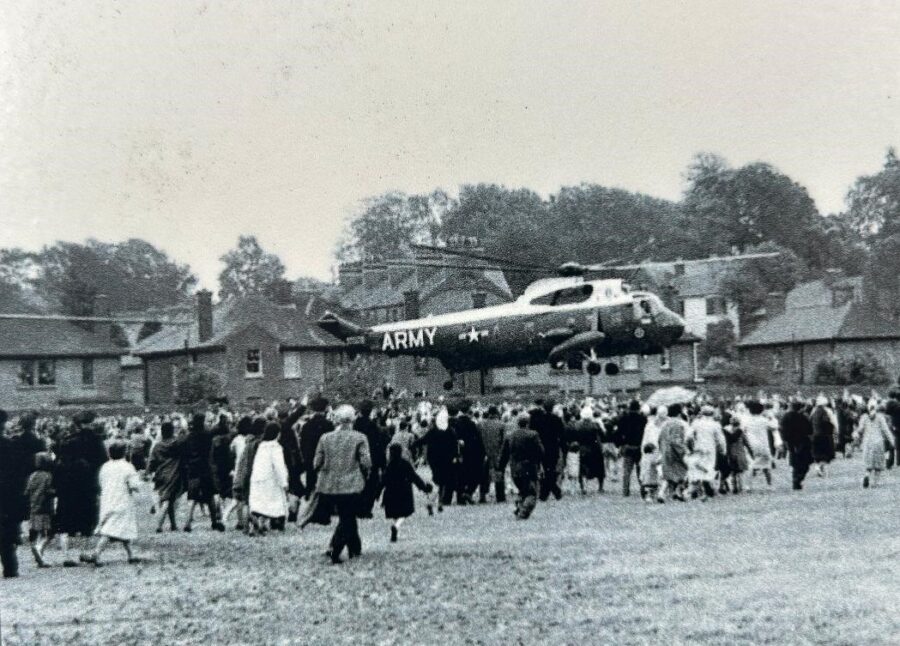
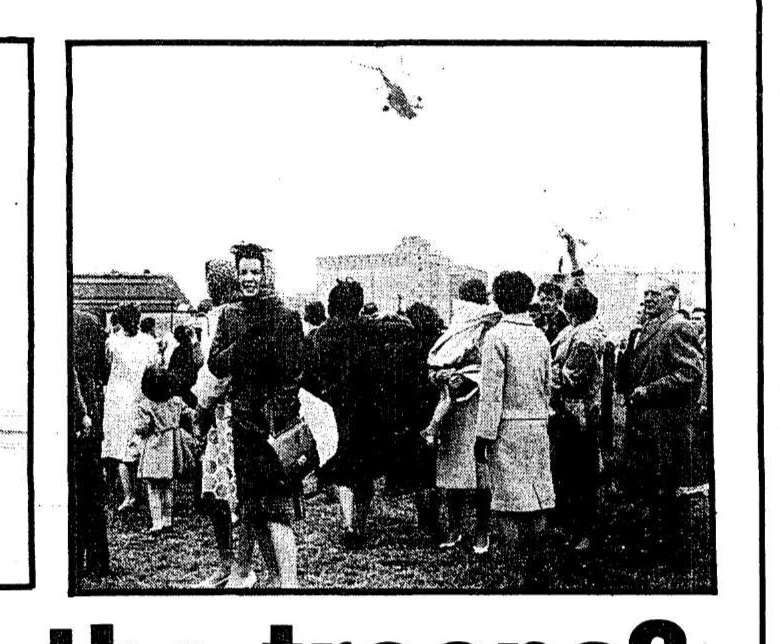
Before his trip to Ireland, JFK was coming back from Berlin where on 26 June, 1963, he gave a historic speech to a crowd in front of the Berlin Wall. The speech was given in response to the Cold War and the tension between the non-Communist countries and the Soviet Union. The Soviet Union built the Berlin Wall as a way to keep people from fleeing to non-Communist countries, mainly West Berlin. Kennedy praised the character of the people of Berlin in their pursuit for freedom.
JFK took office during one of the most turbulent times in American history. The Cold War between democracy and communism was becoming more confrontational, and the United States and the Soviet Union possessed enough nuclear to destroy the world many times over. In American cities, racial tension was rising.
As he struggled with the complexities of foreign and domestic politics, Kennedy sometimes fell short of his idealistic rhetoric. A self-proclaimed supporter of civil rights, he moved forward slowly on the issue until 1963, when racial violence forced his hand. An advocate of peaceful development abroad, he hastened America’s descent into the VIetnam War, a conflict that would end countless lives and bitterly divide his nation.
JFK’s assassination on 22 November 1963, in Dallas, Texas, marked a bloody conclusion to his presidency, but accelerated his coronation as a martyred prince of American politics. In death, he became a cultural icon. In Ireland in particular, he was immortalised in a myriad of commemorative plaques on new housing and parks developments across the country.
In February 1964, members of Cork Corporation chose to immortalise John F Kennedy’s visit to Cork through the naming of the Victoria Road park as Kennedy Park, the renaming of Victoria Quay to Kennedy Quay on South Dockland and a commemorative plaque at the Concert Hall entrance in Cork City Hall.
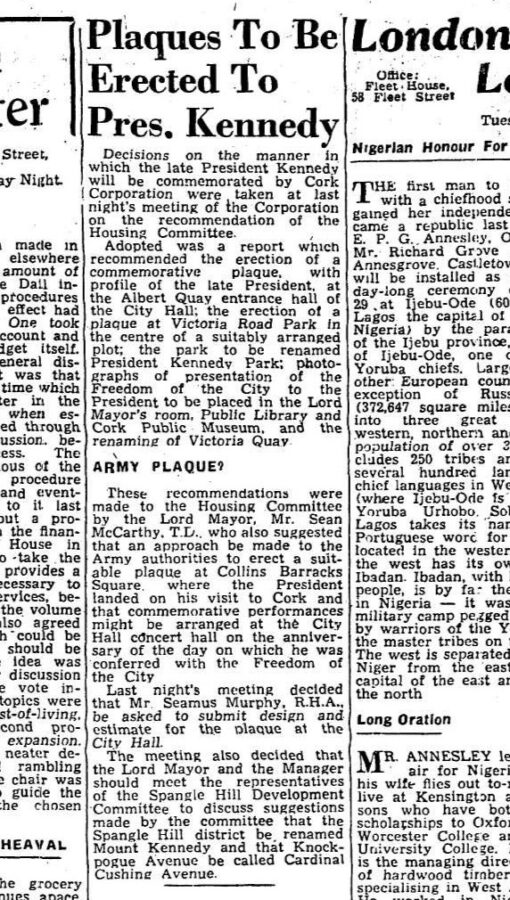
A closer look at Kennedy Park shows that through its landscaping over the years the ground level has been significantly raised in an effort to move it away from its once boggy state.
From 1975 to 1989, the park hosted an annual Perks funfair. Unfortunately, the event destroyed the turf field for a number of months every year. In 1990 a successful campaign by Victoria/ Albert Road Resident’s Association resulted in a vote amongst the councillors of Cork Corporation resulting in the park being restored to just a neighbourhood amenity.
The park is associated with a number of sports. During the early days of the club, it was the home base of Nemo Ranger GAA club. Presently it is the training base for the Cork Admirals American Football team and a home for amateur soccer sides and tag rugby teams. It is also the annual finish line for Cork’s Ladies Mini-Marathon.
In recent years, paths have been replaced and new bedding spaces have been added by Cork City Council.
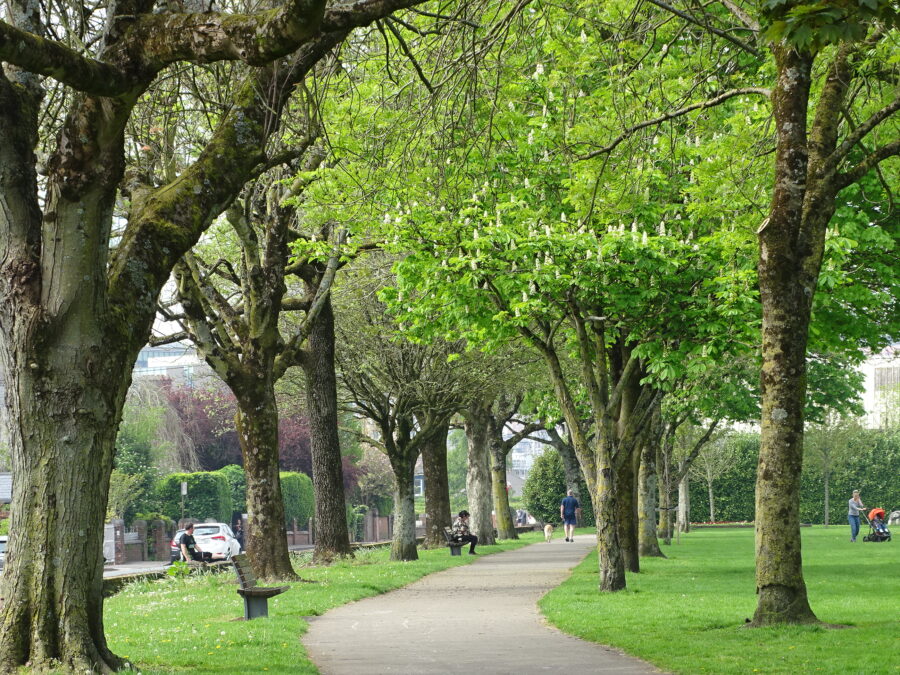
Read more about Ballinlough Park here: 3. Ballinlough Community Park | Cllr. Kieran McCarthy